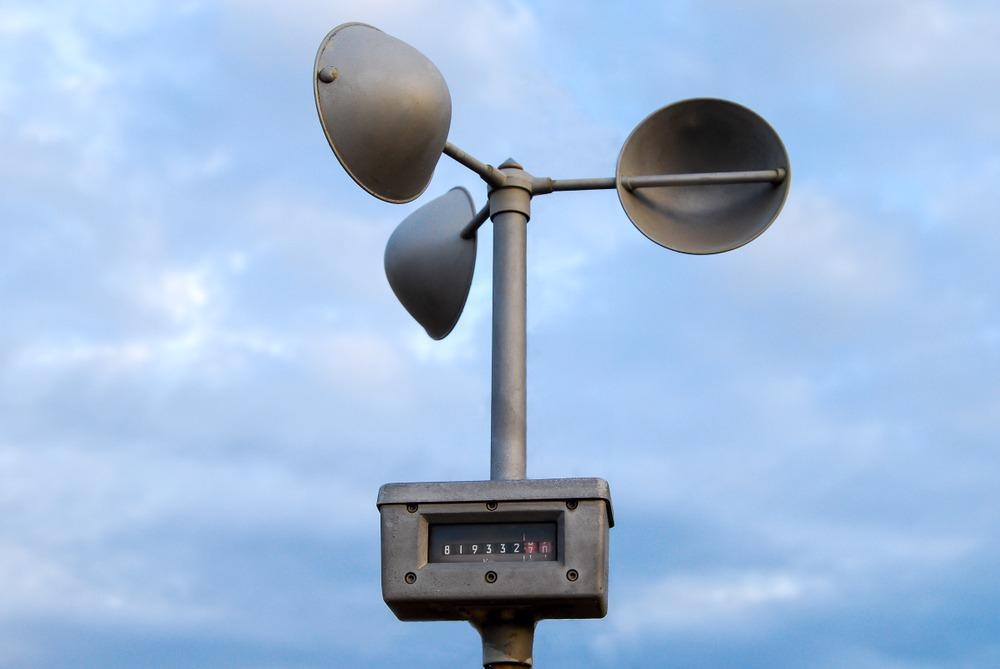The Role of an Anemometer in Improving Safety And Security for Outdoor Activities
The Role of an Anemometer in Improving Safety And Security for Outdoor Activities
Blog Article
Discovering the Features and Advantages of Anemometers for Climate Fanatics and Specialists
Anemometers stand as instrumental tools in the realm of climate surveillance, dealing with both fanatics and skilled specialists alike. These tools use a home window into the dynamic world of wind patterns and speeds, providing vital data for atmospheric analysis and forecasting. From mug anemometers to sonic anemometers, each kind brings its special set of benefits and applications, dropping light on different facets of climatic problems. As we dive right into the features and benefits of anemometers, a deeper understanding arises not only of prevailing climate sensations however also of the broader effects for markets like wind energy production and environmental study.
Significance of Anemometers in Weather Tracking
Anemometers play a crucial duty in weather surveillance by offering exact measurements of wind speed, assisting in projecting and understanding weather patterns. These tools, varying from conventional mug anemometers to modern ultrasonic anemometers, are crucial for meteorologists, researchers, and climate enthusiasts alike. By determining wind rate, anemometers help in figuring out the intensity of weather condition sensations such as twisters, cyclones, and tornados. Additionally, they offer valuable information for aeronautics, maritime procedures, and numerous sectors that are sensitive to wind conditions.
:max_bytes(150000):strip_icc()/GettyImages-186864034-58e3355e5f9b58ef7e576b44.jpg)
Kinds Of Anemometers and Their Applications
The most usual types of anemometers consist of cup anemometers, vane anemometers, hot-wire anemometers, and ultrasonic anemometers. Mug anemometers consist of 3 or four mugs mounted on straight arms that rotate with the wind, determining its speed. Vane anemometers, on the various other hand, use an easily rotating vane to line up with the wind instructions, offering both wind rate and instructions measurements.
Each kind of anemometer has its unique benefits and applications. Mug anemometers are suitable and durable for basic weather condition surveillance, while vane anemometers are favored for directional measurements. Hot-wire anemometers are delicate to low air speeds, making them ideal for indoor settings. Ultrasonic anemometers are non-intrusive and offer high accuracy, often utilized in study and specialized weather tracking applications. Recognizing the qualities and applications of each kind of anemometer is crucial for selecting one of the most ideal instrument for particular weather condition monitoring requirements.
Advantages of Using Anemometers in Forecasting
In meteorology, the use of anemometers uses invaluable advantages for boosting the precision of weather forecasting. Anemometers measure wind rate and instructions, supplying vital information for predicting climate patterns. By including wind information into forecasting versions, meteorologists can much better recognize the motion of weather condition systems, anticipate changes in weather, and issue more specific projections.
Furthermore, anemometers play a vital duty in examining prospective weather threats. Keeping an eye on wind speeds aids forecasters anticipate severe climate events such as hurricanes, hurricanes, and winter season storms with higher accuracy. This very early caution system allows authorities to provide timely notifies and execute needed security measures, minimizing the risks to life and property.
In addition, anemometers assist in maximizing renewable resource manufacturing. By examining wind patterns, meteorologists can recognize appropriate areas click over here for wind farms and anticipate power output, adding to the reliable generation of wind power.

Anemometers in Wind Power Manufacturing
Given the vital duty anemometers play in providing accurate wind data for weather condition projecting and threat analysis, their significance expands to the world of wind power manufacturing. Anemometers are important instruments in the area of wind power, where the dimension of wind rate and instructions is critical for determining the feasibility and efficiency of wind turbine installations. By accurately determining wind speeds at varying heights, anemometers help optimize the placement and design of wind turbines to optimize power outcome.
In wind ranches, anemometers are tactically put to gather real-time wind data that is used to assess the potential energy manufacturing of a website. This information contributes in figuring out the financial practicality of wind energy jobs and in projecting power generation to make certain grid stability. Furthermore, anemometers aid in keeping track of wind conditions to maximize generator efficiency, avoid damage from high winds, and ensure the safety and security of employees news operating in the vicinity of wind generators.
Enhancing Climate Comprehending With Anemometers

Anemometers play a crucial function in improving our understanding of microclimates. These localized weather condition conditions can vary substantially from wider regional forecasts, making it important to have accurate data for details locations. anemometer. By tactically putting anemometers in various locations, scientists can collect comprehensive information on how wind acts in different terrains, city settings, or bodies of water
Additionally, anemometers add to improving climate forecasting models by giving real-time information on wind habits. This information is specifically important for predicting extreme weather condition events, maximizing agricultural techniques, and sustaining sectors like air travel and maritime navigation. On the whole, anemometers are vital instruments that allow us to dig much deeper into the complexities of weather condition systems, ultimately bring about more exact predictions and better-informed choices.
Verdict
In verdict, anemometers play an important duty in weather monitoring and forecasting by gauging wind rate and instructions. Anemometers also have applications in wind energy production, additional highlighting their value in both meteorology and renewable energy industries.
From mug anemometers to sonic anemometers, each kind brings its one-of-a-kind set of advantages and applications, shedding light on various elements of atmospheric problems. These tools, varying from standard mug anemometers to modern-day ultrasonic anemometers, are essential for meteorologists, researchers, and weather enthusiasts alike. The most common types of anemometers include cup anemometers, vane anemometers, hot-wire anemometers, and ultrasonic anemometers. Mug anemometers are ideal and durable for basic climate surveillance, while vane anemometers are preferred for directional dimensions. Anemometers are necessary tools in the field of wind energy, where the measurement of wind speed and instructions is Get the facts critical for determining the usefulness and performance of wind generator setups.
Report this page